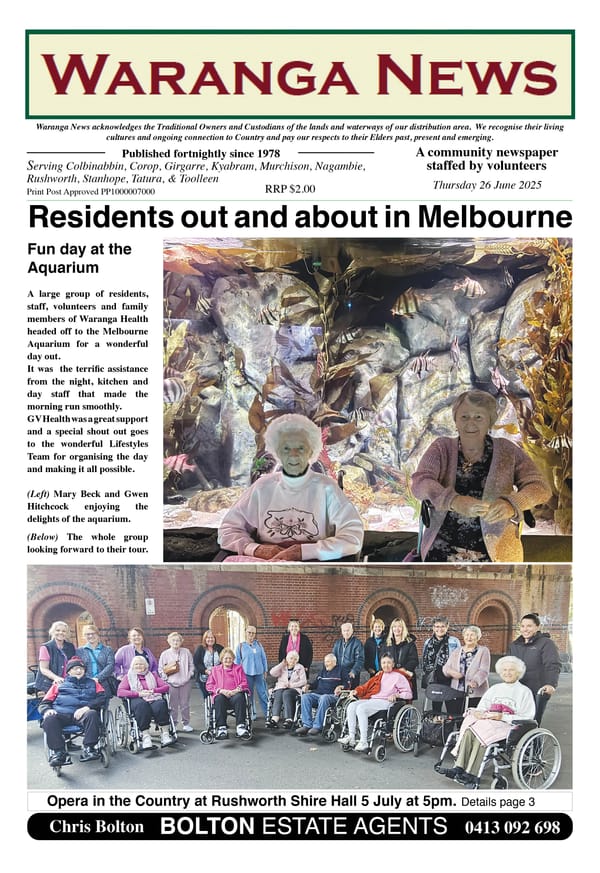41. Greenstone axe-heads

Much of the research that has been done on greenstone axe-heads revolves around the quarry at Mt William near Lancefield. The quarry on the Mt Camel range near Toolleen is much smaller than the Mt William quarry, but displays some of the same characteristics, viz -
- The outcrop bears scars from flaking, crushing and battering
- Pits and trenches are found around the base of the outcrop
- Large amounts of broken stone, particularly flakes, are the same type of stone as the outcrop
- Identifiable stone artefacts, such as unfinished tools, hammerstones, anvils and grinding stones may be around the site1
The quality of the greenstone found on the Mt Camel range is equivalent to that from Mt William. Indeed, when researcher Isabel McBryde was researching and writing about the quarries in the 1970s, she found it was impossible to distinguish whether some of the stones had come from Mt William or the Mt Camel range.2
TRADING OF AXE HEADS
As previously stated, axe-heads and other items quarried on the Mt Camel range were traded over a huge area. For example, McBryde identified an axe-head found at Lake Mungo in NSW as having been quarried on the Mt Camel range. This is between 450-500 km from the Waranga area. It is easy to imagine the valuable items being traded from group to group of Aboriginal people over trade networks that had been in place for hundreds, if not thousands of years.
At a more local level, the early squatter Curr noted that “flints and tomahawks the Bangerang had…(been) obtained from the Ngooraialum and Pimpandoor in exchange for beautiful light reed spears which were easy to carry and most effective in hunting”3 The Bangerang are now seen by some as part of what is now generally referred to as the Yorta Yorta people, who lived on the northern plains and rivers. The “Ngooraialum and Pimpandoor” that Curr refers to are two clans of the Ngurai-illum Wurrung people, based on the Goulburn and Campaspe Rivers respectively.
CONTROL OVER RESOURCES
This begs the question – who controlled the quarry site on the Mt Camel range? Today, there is some conjecture over this question as certain contemporary organisations try to spread their influence and power over places where they were not previously recognised as the traditional custodians. The vast majority of historical information available suggests that this quarry was under the control of the Ngurai-illum Wurrung.
With Mt William, the Wurundjeri clan were, and still are, considered the custodians. There is evidence to suggest that most of the quarrying was done by a ngurungaeta (elder, leader) with a small group of helpers. Interestingly, despite the value of the resource, there appear to have been no attempts by other clans to take over, by force or otherwise. Wurundjeri rights to the site are recognised and respected, as they have been for generations.
MORE THAN JUST A TOOL
Some researchers suggest that greenstone carried far great significance than one would first imagine. Rather than just being the raw material for axe-heads, at least one academic has postulated that Mt William (and hence Mt Camel range?) greenstone might be symbolic in a cultural sense and be linked to the cosmological beliefs of Aboriginal people.4
One of the reasons for this conclusion is the fact that greenstone axe heads have been found in areas where alternative stone is available for tool-making. This suggests the rather unique green colouring of the stone, which is only found in a handful of places in Victoria, imbued it with a special significance. Or, could it have been that the sites of the greenstone quarries were important dreaming sites? It is not hard to imagine the top of the Mt Camel range, with its spectacular panoramic views, being a very special place for Aboriginal people.
References: 1 vic.gov.au Aboriginal Victoria Fact Sheet: Aboriginal Quarries; 2 McBryde, I, Kulin greenstone quarries: the social contexts of production and distribution for the Mt William site. World Archaeology 16, 267–85 (1984); 3 Curr, Edward M, Recollections of Squatting in Victoria, p 267; 4 Brumm, A. R. (2010). 'The falling sky': symbolic and cosmological associations of the Mt William greenstone axe quarry, Central Victoria, Australia. Cambridge Archaeological Journal, 20 (2), 179-196.



